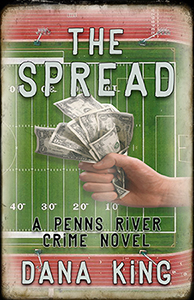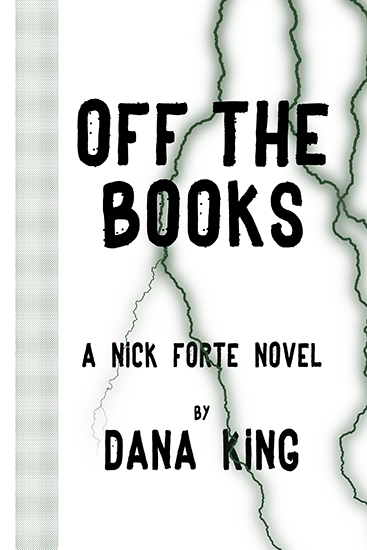I tend to think of Lynn Kostoff as a ‘writer’s writer’
because of his superior craftsmanship, though I realize that’s damning with
faint praise. Lynn should be a ‘reader’s writer,’ as his books incorporate the
aforementioned craftsmanship to create multi-dimensional characters, layered
storylines, and twists that leave you shaking your head for a few seconds before
you realize their inevitability. I call it ‘The Fiction Trifecta.’.
Lynn’s new book The Length of Days, includes all the elements that have made me a fan for years. It surprised me when I realized he’d never been on the blog. Today we take care of that.
One Bite at a Time: Welcome to the blog, Lynn. I’ve been a fan for a long time and was shocked – shocked! – to see this is your first interview here. Whether that shows you have lowered your standards or I have raised mine remains to be seen. Either way, welcome aboard.
It’s been eleven years since your most recent book, Words to Die For. What the hell?
Lynn Kostoff: Time and Chance happen to us all.
OBAAT: The Length of Days weaves together several plots that end up related to various degrees. How did the planning go? Outline? Several independent stories you wove together? In your head with going back to make things work out?
LK: Weave is probably the operative term here. I drafted the first chapter which contained the primary plot hook: the death of the twelve young women. I liked the idea of an ensemble novel with multiple protagonists who, on the face of it, seemingly had no connection to or with each other.
Next, I spent a lot of time doing what I call “character auditions,” in essence creating a series of character sketches and trying to tease out a central problem each was struggling with.
Once I had the protagonists established, I began drafting the novel proper. I still did not know for sure how the characters were connected to each other at that point, but I trusted that the writing process would enable me to discover what I needed to know and help me recognize how the characters related to each other and the death of the young women.
Along the way, I began envisioning the novel as a spider’s web with the dead women and the killer nesting in its center, and that metaphor helped with structuring its events and character arcs.
OBAAT: The Length of Days reminded me a little of a Ross Macdonald novel, as hidden family secrets create or complicate problems in the present day. How prominent were the family angles when you were devising the story?
LK: While I admire Ross Macdonald’s works, I did not see the dark family secrets and their repercussions in Days until I drafted them. They came as a happy and welcome surprise and felt “right” on both the micro and macro level of plotting.
OBAAT: There is a Magnolia Beach in South Carolina, but no city with that name. (I checked.) Is the Magnolia Beach in the book based on a real place or wholly fictional? If fictional, did you create a map for yourself? I’ve read few novels that established the location as well as you did here, even when they were set in real places.
LK: My wife and I live a little less than two hours from the South Carolina coast and spend a lot of time there. Magnolia Beach is basically an amalgam of the beach towns comprising the Grand Strand (the towns and beaches running between Little River, SC and Georgetown, with Myrtle Beach at its center).
Researching the Low Country’s history, I discovered there was an actual Magnolia Beach at one time, but it had been destroyed by Hurricane Hazel in 1954. In the 1930’s Magnolia Beach was exclusively African-American and housed the Magnolia Beach Club which was listed in the famous (or perhaps infamous is the more appropriate term) Green Book. Duke Ellington, Charlie Parker, and Ray Charles among others often performed there.
OBAAT: Every character is well-developed and well-defined. While there are several places where I thought “I did not see that coming,” none of them seem out of character in retrospect. How much of each character did you have laid out in advance, or did they develop in your head as you wrote them?
LK: Robert Frost once said “No surprise for the writer, no surprise for the reader.” While I spend a lot of time planning and sketching and setting up rough working outlines, ultimately I trust the characters to take me where the plot and I need to go. Orchestrating those “I didn’t see that coming” moments comes from brutal revision and line-editing sessions. In The Length of Days, I ended up cutting over 175 pages to help sharpen the dramatic focus and placement for those moments.
OBAAT: Keith Rawson asked you in an interview for LitReactor, “Which fictional character would you most like to have a drink with, and why?” Your answer: “I would probably enjoy having a couple beers with John Yossarian from Catch 22 or Marlow from Heart of Darkness; they’re two characters who are close to my everyday temperament.”
It’s been ten years. Is your answer still the same?
LK: Given the current political and cultural reality, I would still invite Yossarian and Marlow for a beer because Yossarian saw through lies and Marlow hated them.
However, I’d like to add a few more for a couple rounds. One being Ben Doc Dougherty from your novel Grind Joint and Eddie Senta from Charlie Stella’s Eddie’s World. I’d also be remiss if I didn’t include Mario Balzic from K.C. Constantine’s Rocksburg novels. They’d all make fine drinking companions.
The Length of Days drops on July 4.

